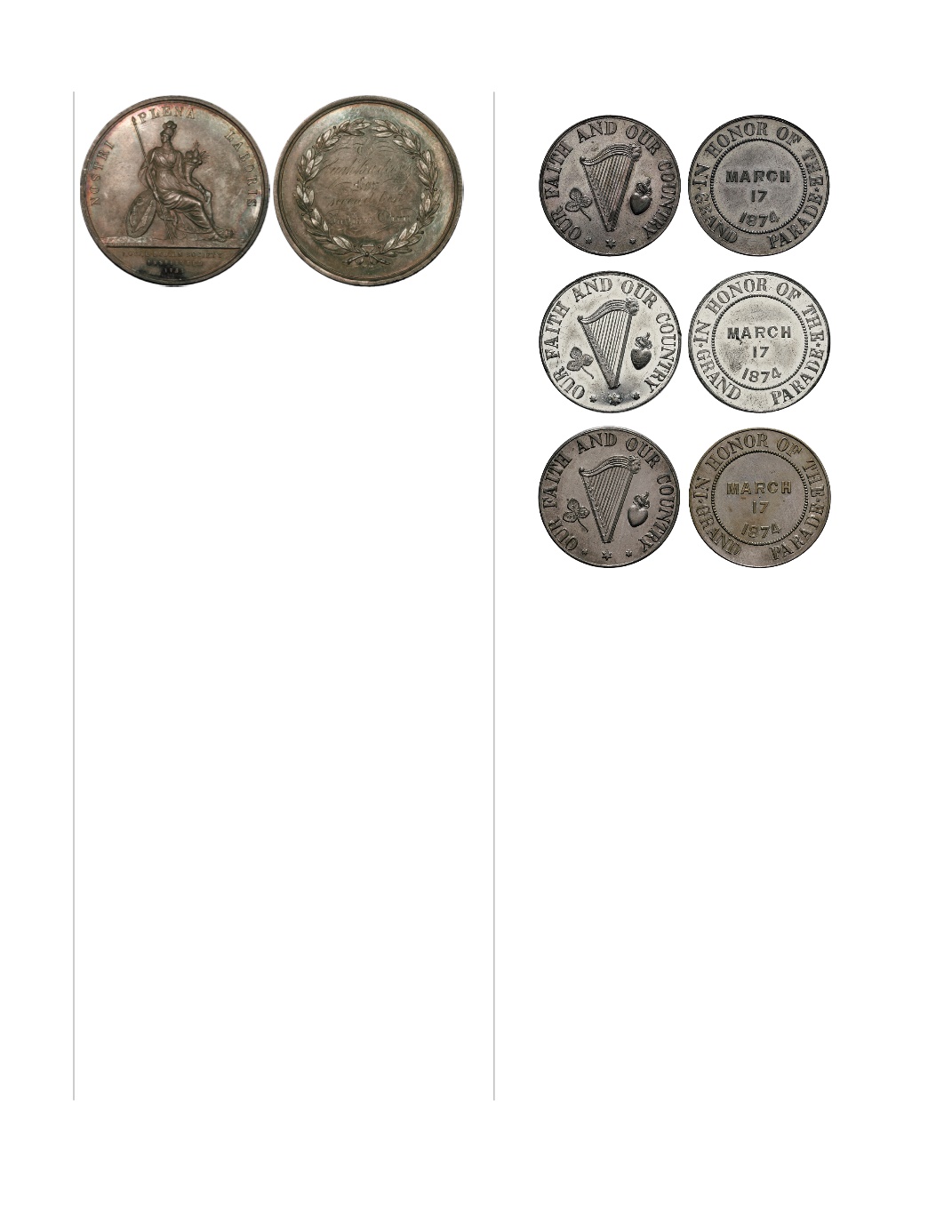

114
513.
Medal. Agricultural: Corn
. 1847. Silver, 43.3mm,
36.0g Obv: NOSTRI PLENA LABORIS Royal
Dublin Society Instituted 1731, Minerva seated
right, signed; Woodhouse. Rx: To Hugh Barton Esq
for Second Best Indian Corn; Initials WW under
wreath bow. Edge: Exhibition of Farm Produce
1847. Unc
$500
Hugh Barton (1766-1854), from Limerick, Ireland,
was a notable figure in the Bordeaux wine trade
before and after the French Revolution. He teamed
up with his friend Daniel Guestier, who had a fam-
ily lineage in wine making, to create Barton &
Guestier, which still makes wines today.
In 1794, the French Revolution entered its most vio-
lent phase, the Terror. Under foreign invasion, the
French Government declared a state of emergency,
and many foreigners residing in France were arrest-
ed. Hugh Barton was one of the foreign merchants
arrested but escaped to his estate in Ireland, leaving
Guestier temporarily in charge of affairs in France.
In 1845, Ireland experienced a potato blight which
destroyed 40% of the Irish potatoes and the follow-
ing year, virtually 100% of the crop was ruined.
Successive crop failure led to "Black '47," with
increases in famine, emigration, and disease.
English colonization of Ireland and wars had forced
the Irish to pay exorbitant rents and taxes and to
export their crops (corn, wheat, barley, and oats)
to Britain, which left the potato as the sole dietary
staple for the people and their animals. While other
regions were able to turn to alternative food sourc-
es, the Irish were dependent on the potato and the
results of the blight were disastrous.
Although the obverse of the medals offered in this
sale are not that uncommon, the fact that they were
awarded to Hugh Barton, a name that is known
today in the wine industry and issued during the
Irish Potato Famine for the very crops that were so
significant at the time, make these medals incredible
and sought after pieces of history.
514.
Tokens Set
. 1874. Three: Bronze; 32mm, 15.0g;
Brass; 32mm, 13.0g; White metal, 32.2mm, 11.0g.
Obv: Our Faith And Our Country; Harp with fiery
heart and clover. Rx: In Honor Of The Grand
Parade, March 17, 1874
$300
Not much is known about these tokens. The tag
that came with them states that only 25 sets were
made and issued to dignitaries only. Dave Baldwin,
an expert and researcher of Lovett Tokens and
Medals states that although he has not been able
to definitively attribute these to Robert Lovett Jr.,
he suggests that there is a probability that these
are his work because of the association of the
Grand Parade die with known Robert Jr. dies. The
date and location are right for it being his work.
Robert Lovett Jr. is probably most well-known to
numismatists for his engraving and striking of the
Confederate Cent.


















